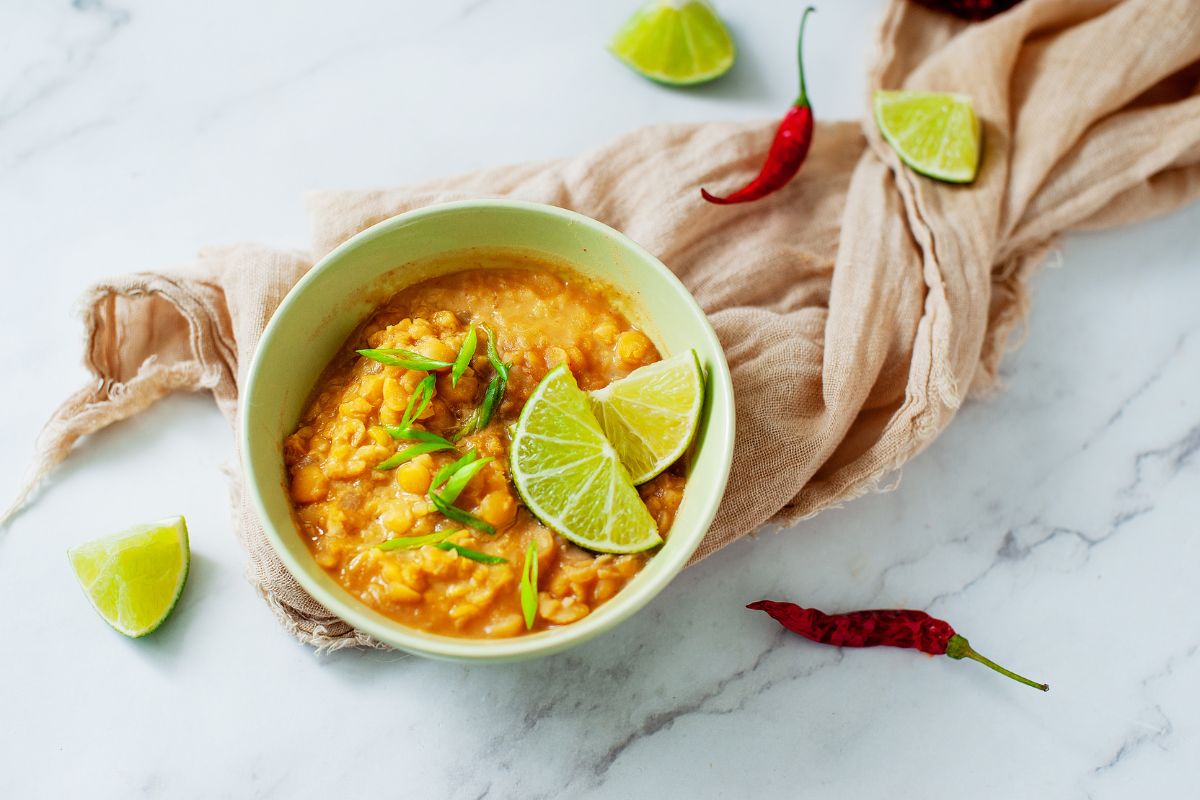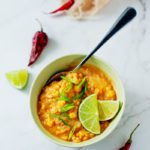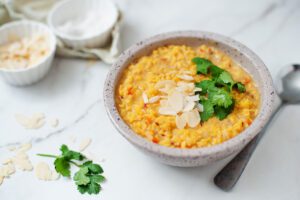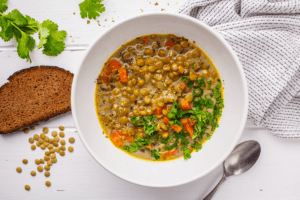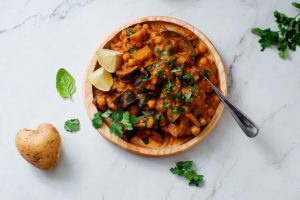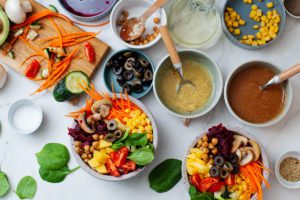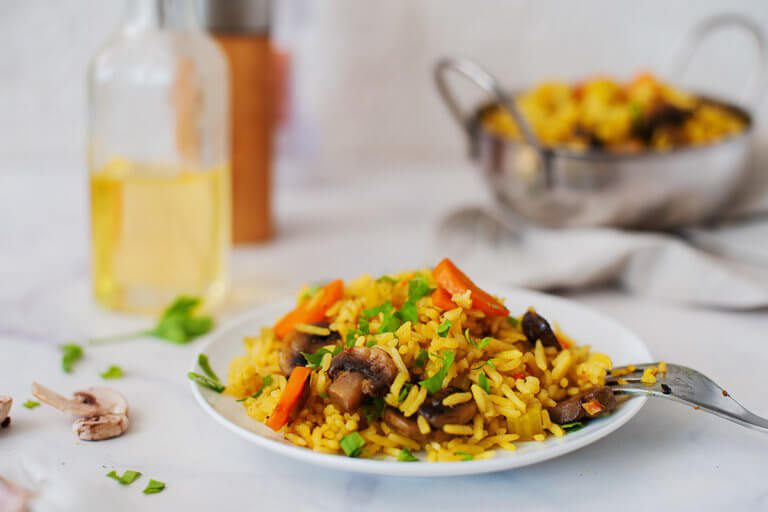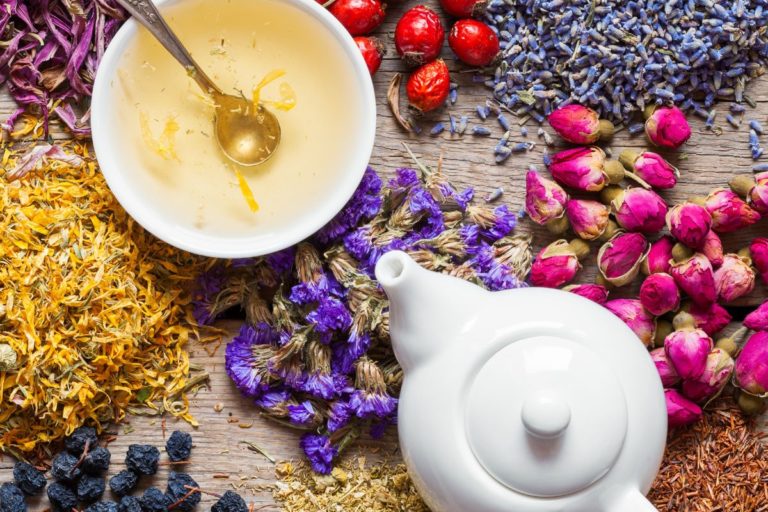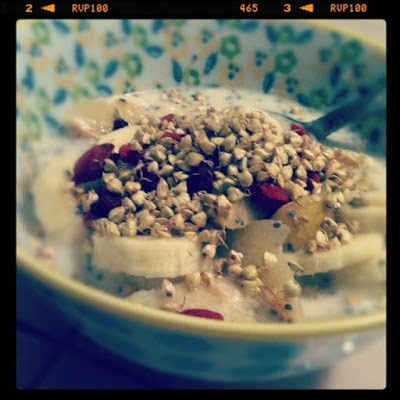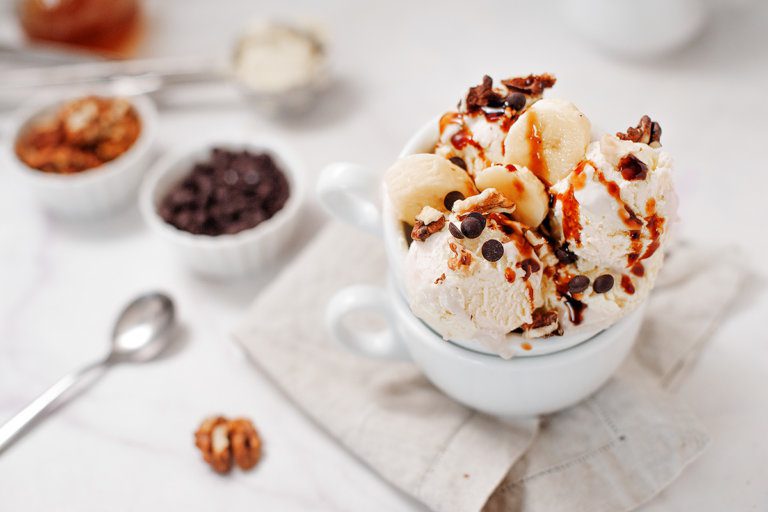Soup season is upon us and this sriracha split mung bean soup recipe is the perfect way to warm up on a chilly day.
Plus, the added kick of Sriracha gives it a delicious spicy twist that will keep you coming back for more.
In an effort to combine my solo travel experiences in one delicious bowl, I’ve taken moong beans (a common ingredient in Indian cuisine) and combined them with sriracha, an Asian spicy sauce…. making it unlike anything else you’ll see on Google 🙂
This absolutely delicious take on traditional Indian cuisine is exactly what’s needed for dinner tonight.
I’m going to go through a bit more of the history and tradition behind split mung bean soup (aka moong dal) and the variations of this recipe. If you just want to make the damn thing (I get it!) then jump ahead.
Traditional Split Mung Beans Soup
Split mung beans, also known as moong dal, are commonly used in traditional Ayurvedic cuisine as they are easy to digest, high in protein and considered to be cooling and grounding. They are often used in soups, stews and dahls (lentil-based dishes) as a base ingredient. They are also used in Ayurvedic cleansing and detox diets, as they are thought to help support healthy digestion and elimination. They can be used in both sweet and savory dishes and are often used in combination with other lentils, legumes and grains to create a balanced and nourishing meal.
Split mung beans according to Ayurveda
In Ayurveda, split mung beans are considered to be a tridoshic food, which means that they can balance all three doshas (Vata, Pitta, and Kapha). They are considered to be light, easy to digest and have a sweet taste.
Split mung beans are known to be cooling, which makes them beneficial for balancing pitta dosha, which is associated with heat, inflammation, and metabolism. They are also known to be grounding, which makes them beneficial for balancing vata dosha, which is associated with movement, dryness, and change. They are also thought to be nourishing, which makes them beneficial for balancing kapha dosha, which is associated with structure, lubrication, and stability.
Furthermore, split mung beans are also said to be good for overall health as they are a good source of protein, carbohydrates, minerals and vitamins. They are said to be good for the heart and blood vessels, good for the digestion, support healthy elimination and are said to be beneficial for the skin and hair.
Split Mung Beans Soup Variations
In Ayurveda, split mung bean soup is typically made by boiling the beans with water and spices, and then seasoning with ghee and herbs. Here are a few common recipe variations for split mung bean soup in Ayurveda:
- Moong dal khichdi: This is a popular Indian dish made by cooking split mung beans with rice, ghee, and spices. It’s considered a comfort food and it’s easy to digest.
- Mung dal tadka: This is a popular Indian dish made by cooking split mung beans with spices, ghee, and a seasoning of mustard seeds, cumin seeds, and fresh herbs. It’s a flavorful and easy to digest dish.
- Mung dal and vegetable soup: This is a dish made by cooking split mung beans with vegetables such as carrots, squash, and greens, with the addition of ghee, ginger, and spices. It’s a nourishing and grounding dish that is easy to digest.
- Mung dal and Spinach soup: This is a dish made by cooking split mung beans with spinach and ginger, with the addition of ghee, cumin and other spices. It’s a nourishing and grounding dish that is easy to digest.
- Mung dal and Coconut milk: This is a dish made by cooking split mung beans with coconut milk, ginger, turmeric and other spices. It’s a rich and flavorful dish that is easy to digest.
These are just a few variations of split mung bean soup, and there are many more variations that can be made by using different spices and herbs, and by adding different vegetables and grains to the soup.
Using sriracha for a spicy yellow split mung beans soup
Listen, I’ve been traveling around the world for the last decade so I’ve been playing with a fusion of flavors… which is how this sriracha yellow mung beans soup was born.
And let me tell you: making a spicy mung bean soup with sriracha can be a delicious and simple way to add some heat and flavor to the dish. The process is similar to making a regular mung bean soup, but with the addition of sriracha sauce to give it some heat.
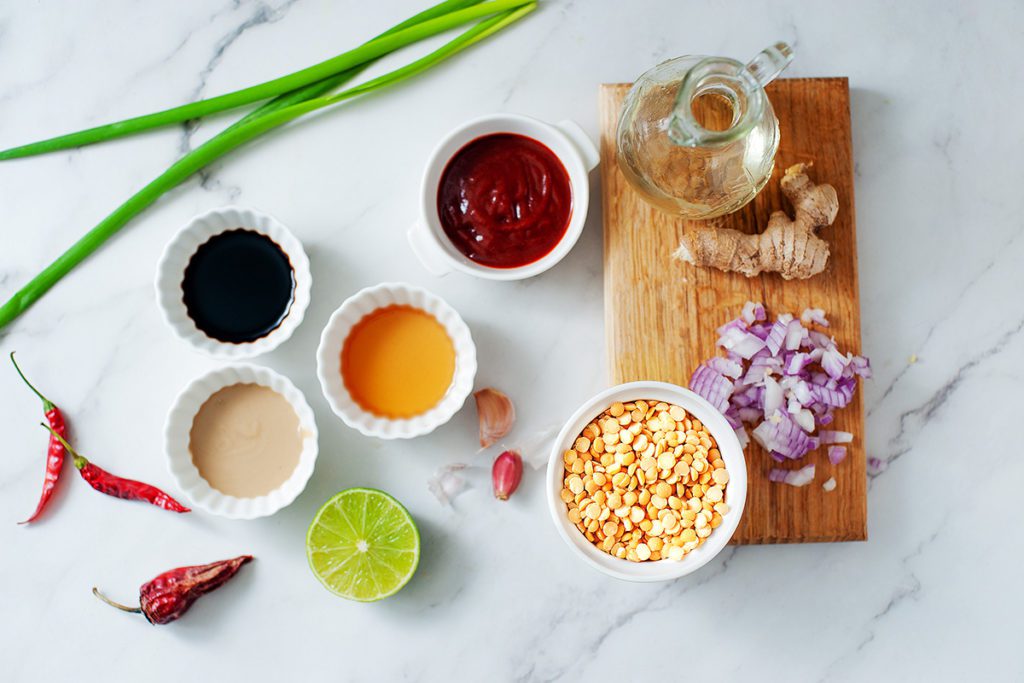

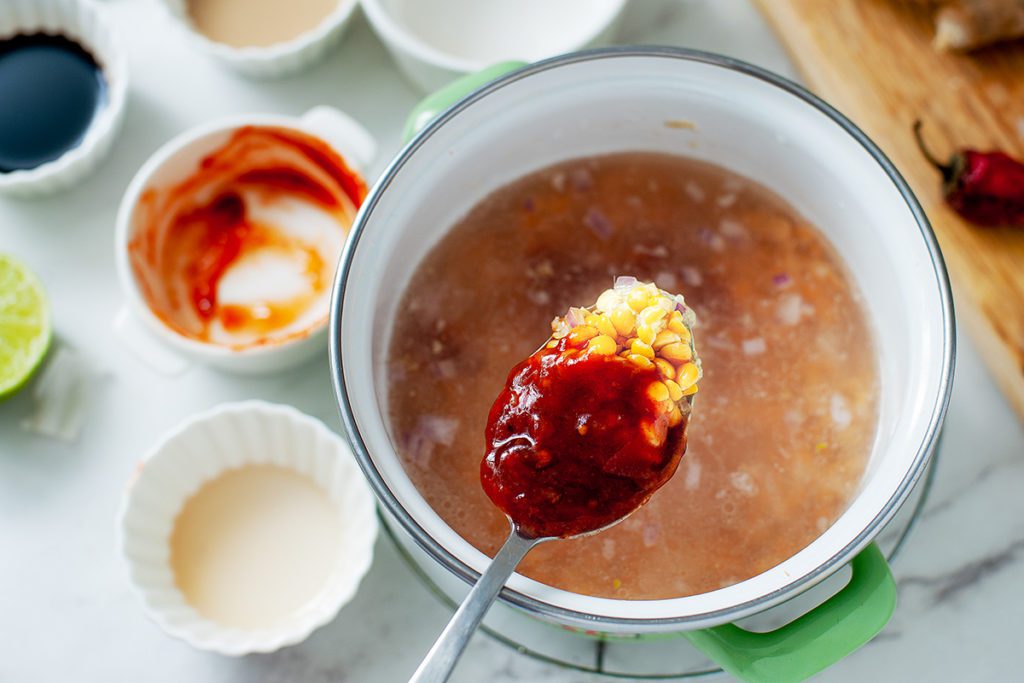

Tips for cooking dried mung beans
Here are a few tips for preparing and cooking split mung beans:
- Rinse the beans thoroughly in a fine mesh strainer to remove any debris or dirt.
- Soak the beans in water for at least 4 hours, or overnight, to soften them and reduce cooking time. Drain and rinse the beans before cooking.
- To cook, add the soaked and drained beans to a pot with enough water to cover them by 2 inches. Bring to a boil and then reduce the heat to a simmer.
- Cook the beans until they are tender, which can take anywhere from 20-40 minutes depending on the freshness of the beans and whether or not they were soaked beforehand.
- Season the cooked beans with salt and any other desired herbs or spices, and serve as a side dish or add to soups, stews, or curries.
- You can also pressure cook the beans for 8-10 minutes or use an instant pot for 15-20 minutes.
- You can also sprout the beans before cooking. It increases the nutrient value and also makes it more digestible.
Warming Split Mung Bean Soup
Ingredients
- 1 tbsp extra virgin olive oil
- 1 small red onion
- 2 garlic cloves
- 1/2 inch fresh ginger
- 1 cup split mung beans
- 3 cups water
- 1/4 cup sriracha
- 2 tbsp maple syrup
- 2 tbsp soy sauce
- 1 tbsp tahini
To serve (optional)
- lime wedges
- lime juice
- green onions
Instructions
- Heat the oil in a pan. Add the onion, garlic, and ginger, and sauté for 2-5 minutes, or until onion becomes soft.

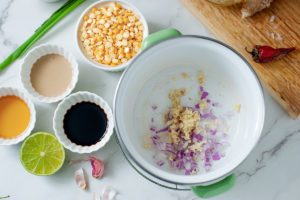
- Add the rinsed and drained mung beans, water, sriracha, and maple syrup. Bring to a boil and let simmer over medium heat for about 25-30 minutes, stirring occasionally.

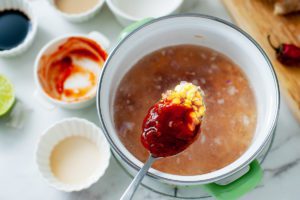
- Remove from heat and stir in the soy sauce and tahini. Serve with lime slices and green onions. Drizzle lime juice.

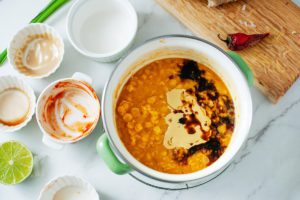
- Optional: Pop an immersion blender in there for a more traditionally soft texture.

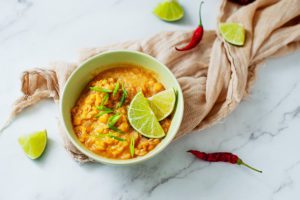
Common Questions
This is a recipe that can vary widely, depending on the ingredients and appliances you have. Plus, mung beans are not the usual supermarket item that many of us cook with often! So here are some answers to the questions I had when I first tried to make this recipe.
Using a pressure cooker?
Here’s how you can cook split mung beans in a pressure cooker:
- Rinse the beans thoroughly in a fine mesh strainer to remove any debris or dirt.
- Soak the beans in water for at least 4 hours, or overnight, to soften them and reduce cooking time. Drain and rinse the beans before cooking.
- Add the soaked and drained beans to the pressure cooker.
- Add enough water to cover the beans by about 1 to 2 inches.
- Close the lid of the pressure cooker and set the pressure valve to the sealed position.
- Cook the beans on high pressure for 8-10 minutes.
- Once the cooking time is up, let the pressure release naturally for about 10 minutes before carefully releasing the pressure manually.
- Open the lid of the pressure cooker and check if the beans are tender. If they are not, close the lid and cook for an additional 2-3 minutes under high pressure.
- Once the beans are cooked (they’re cooked with they have a soft texture), season them with salt and any other desired herbs or spices, and serve as a side dish or add to soups, stews, or curries.
Note: Cooking times may vary depending on the type of pressure cooker you are using and the freshness of the beans.
What’s the difference between whole mung beans and split mung beans?
Whole mung beans and split mung beans are both types of mung beans, but they are prepared and cooked differently due to their different physical characteristics.
- Preparation: Whole beans are typically larger and firmer than split mung beans, so they may require longer soaking and cooking times. They may also have a tougher skin that needs to be removed before cooking. On the other hand, Split mung beans are smaller and have had their outer husk removed, which makes them quicker to cook and easier to digest. They also require less soaking time.
- Cooking: Whole mung beans typically take longer to cook than split mung beans. Whole mung beans can take anywhere from 45 minutes to 1 hour to cook, while split mung beans can take 20-40 minutes to cook. Whole mung beans are typically used in stews, soups, and curries, while split mung beans are often used in dals, and can be used to make sprouts.
- Taste: Whole mung beans retain their shape better during cooking and have a slightly nuttier taste than split mung beans. Split mung beans, on the other hand, tend to break down more and have a softer texture, making them ideal for use in soups and curries.
It’s important to note that cooking times may vary depending on the freshness of the beans, the cooking method used, and the recipe.
Where can you buy mung beans?
Mung beans can be found in many supermarkets and health food stores. They can be found in the bulk food aisle, where you can buy them in small or large quantities, or in the dried bean section. You can also find them in an ethnic market, where they might be labeled as “moong dal” or “green gram”.
You can also purchase mung beans online through retailers such as Amazon, Walmart, and Thrive Market. Some health food stores also sell mung beans online through their own websites.
Lastly, you can find mung beans in any grocery store with a section for Indian, Middle Eastern, Southeast Asian, and Chinese food items. Or better yet, Indian stores will have them for sure. But I hope you buy them through my links so that I can continue to follow my passion with online blogging 🙂
